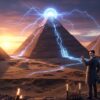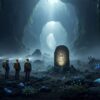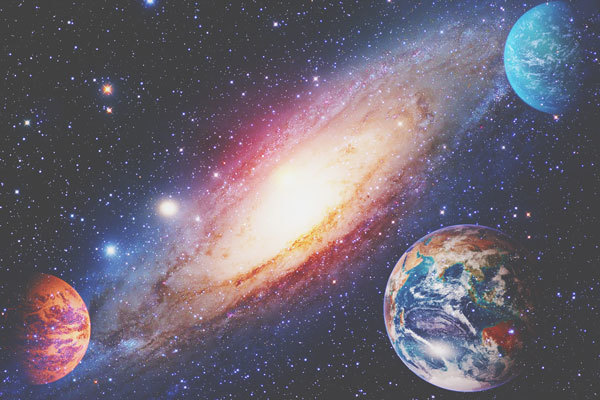Antarctica—the coldest, driest, and most remote continent on Earth—remains shrouded in mystery. From whispered legends of ancient civilizations buried beneath its ice to rumors of hidden worlds beyond its frozen borders, this enigmatic landmass has long captured the imagination of adventurers, conspiracy theorists, and truth seekers alike.
But what if there is more to the southernmost continent than science and textbooks admit? What if, behind the towering Antarctic ice wall, there exists an entirely different world—one that challenges our understanding of history, geography, and reality itself?
At the heart of this mystery lies one of the most famous polar expeditions in history: the ill-fated 1912 journey of Captain Robert Falcon Scott. What his team may have discovered—and what was quietly buried in British archives for over a century—could forever change the way we view Antarctica. Some claim that beyond the ice wall, Scott’s expedition stumbled upon something extraordinary: a warm, uncharted ocean… and signs of a forgotten civilization.
The Lost Legacy of Captain Scott
Captain Robert Scott, a decorated officer of the British Royal Navy, led the Terra Nova Expedition from 1910 to 1913 with the goal of reaching the South Pole. Tragically, Scott and four of his companions perished on their return journey, just weeks after discovering that Norwegian explorer Roald Amundsen had beaten them to the Pole. Officially, the story ends there—a heroic but doomed mission in the face of impossible odds.
But behind the official narrative lies a more controversial tale, one pieced together by independent researchers, alternative historians, and whistleblowers who claim that Scott’s team encountered far more than snow and ice.

Several surviving members of the Terra Nova expedition returned to the United Kingdom with strange and suppressed photographic evidence. Most of these materials were allegedly sealed away in classified archives under government control, never to be released to the public. However, in recent years, a handful of these images have surfaced online, raising questions no one in the scientific community seems eager to answer.
Leaked Photographs: Glimpses Into the Unknown?
In December 2022, a batch of supposedly authentic photographs re-emerged on platforms like BitChute, sparking renewed interest in Scott’s expedition and what it may have truly uncovered. These black-and-white images, claimed to have been taken between 1910 and 1913, show landscapes entirely inconsistent with what we’ve come to expect from Antarctica.
Rather than endless ice fields, the photos depict a rocky coastline bordered by open water—possibly a vast, warm ocean hidden behind the so-called Antarctic ice wall. Some images show dense vegetation, even what appear to be forests. Others capture ancient-looking stone ruins, statues of humanoid figures or otherworldly creatures, and enigmatic temple structures scattered along a temperate shoreline. These photos suggest that Scott’s team may have crossed a threshold beyond which the rules of Earth’s known climate and geography no longer apply.
Could this be the real “southern world”—a land untouched by modern civilization and forgotten by time?
Antarctica and the Hollow Earth Theory
These revelations echo long-circulated theories about Antarctica’s true nature. Many alternative researchers have long speculated that the continent may be the gateway to a hidden realm: the entrance to the Hollow Earth. This controversial idea posits that our planet contains a vast inner world accessible only through certain polar openings, shielded from the public by powerful world governments.
Some suggest that Scott’s expedition reached one of these gateways, glimpsing a different dimension or untouched civilization before disaster struck. The notion is not without precedence in ancient maps—such as the infamous Piri Reis map, which shows a remarkably accurate depiction of an ice-free Antarctica centuries before its official discovery.
Suppressed Knowledge or Fictional Intrigue?
Skeptics, of course, argue that these photos are clever fakes, perhaps generated or enhanced by AI tools. But even the most advanced technology can’t easily explain away the persistent oral accounts, testimonies from explorers, and the eerily consistent themes found in apocryphal literature—like the mysterious books written by “Hans-Ulrich von Krantz,” which delve into Nazi expeditions, secret Antarctic bases, and interdimensional travel. While these books are fictional by genre, many claim that hidden truths are veiled beneath their pages.
If this is the case, one must ask: why would someone go to such lengths to encode facts as fiction?
The Strange Death of Captain Scott
Digging deeper into the Terra Nova tragedy reveals further anomalies. Unofficial investigations allege that the intermediate supply depots meant to support Scott’s return journey were mysteriously looted. Food, fuel, and shelter were missing—without any signs of environmental damage or predator interference. How could these resources vanish in such a hostile, lifeless environment?
Some suggest foul play. Captain Scott may have discovered secrets too dangerous to reveal. If he intended to go public with his findings, could someone have ensured he—and his team—never made it home?
His death, according to these interpretations, was not a result of bad weather and misfortune, but of deliberate sabotage. A permanent silencing.
Echoes from Operation Highjump and Beyond
The mystery doesn’t end with Scott. In 1947, Admiral Richard E. Byrd led Operation Highjump, a massive U.S. military expedition to Antarctica. Officially a scientific mission, it involved aircraft carriers, submarines, and over 4,000 personnel—far more than necessary for a “research project.”
Following Byrd’s return, he made cryptic comments in interviews, suggesting that the U.S. had encountered enemies capable of flying from “pole to pole at incredible speeds.” Was he referring to Nazi remnants, advanced technology, or something even stranger?
Today, Byrd’s accounts remain classified or redacted, his warnings largely forgotten.
What Are They Hiding in Antarctica?
If even part of these claims are true, then Antarctica may not be a barren wasteland, but rather the key to understanding ancient civilizations, forbidden knowledge, and the structure of our world. Whether through natural anomaly, extraterrestrial influence, or deeply buried history, the southern continent guards secrets that could rewrite everything we know.
NASA provides us with crystal-clear images of Mars, yet Antarctica—here on Earth—remains more heavily restricted and unexplored. Why?

Are governments hiding something? Is there truly a warm ocean beyond the ice wall, a place untouched by modern man?
The Final Frontier?
In the end, we are not here to declare one theory true and another false. We’re here to ask the questions mainstream history avoids. We seek truth—not confirmation. Whether one believes in the Hollow Earth, the Flat Earth, or simply a hidden history buried under ice, one thing is certain: Antarctica is not what we’ve been told.
What lies beyond the Antarctic ice wall? Perhaps, one day soon, the world will find out.
Until then, we can only follow the clues left behind by brave explorers like Robert Scott—and keep asking the questions that still echo across the frozen silence of the South Pole.

















